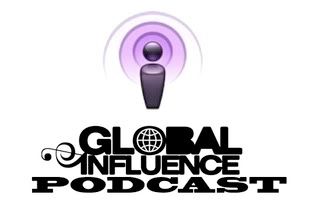
Type:
Party - Benefit
Start Time:
Tuesday, June 1, 2010 at 6:00pm
End Time:
Wednesday, June 2, 2010 at 2:30am
Location:
q lounge
Street:
1234 Locust Street
Description
BROTHERLY LOVE EVENT@ Q LOUNGE ( MONTHLY EVENT)
Proceeds from this event will be donated to Philadelphia non-profit organizations, in order to help the efforts of our area’s brothers, sisters, men, women, children and seniors. There is a suggested donation of $5-10 per person. This gay, straight, all community supported and focused event will have an audience of open-minded, fashion forward, musically and culturally diverse people with a refined edge. We hope youcan join us! It is sure to be a great night!
06/01/10
PLEASE HELP US TO RAISE FUNDS FOR RSD RESEARCH AND AWARENESS
The Tame the Flame Foundation (formally The Carrie Deussing RSD Foundation) is a 501(c)(3) charitable organization and all funds raised will go directly to RSD research.
American RSD Hope at rsdhope.org ,RSDS Association of America at rsds.org RSD - The Misunderstood Pain Disease at yourfamilyshealth.com/articles/msd.html
DJS :
Dj Venus7
Deep C
Dj Randy Flash
Tommy HoGunz
DEL
Todd Diggz
Mike Maserati
AFTER PARTY W/ DJ LEE JONES
About RSD/CRPS
What is RSD? Reflex Sympathetic Dystrophy Syndrome (RSD or RSDS), also known as Complex Regional Pain Syndrome (CRPS), is a progressive disease of the autonomic nervous system that can follow a simple trauma (a fall or a sprained limb), a break or fracture (especially the wrist and ankle), sharp force injury (such as a knife or bullet wound), heart problems, infections, surgery, repetitive strain injury or carpal tunnel syndrome, spinal injuries or disorders, or major trauma.
It is a multi-symptom disorder that can affect one, two, or even all four of the extremities. It can also present in the face, shoulders, back, eyes, and other areas as well. RSD involves nerves, skin, muscles, blood vessels (which constrict and cause pain), and bones. It may spread from one part of the body to another, regardless of where the original injury occurred, and can spread in up to 70% of cases. In a small number of cases (8% or less) it can become systemic, or body-wide.
Who can get RSD? ANYONE can get RSD. There are millions of men, women, and children across the United States with this disease. It affects women more often than men, sometimes as high as four or five women for every man. RSD affects all age groups but predominantly occurs in the 30s or 40s. RSD is ranked as the most painful form of chronic pain that exists today.
Symptoms of RSD There are four main criteria for a diagnosis of RSD: 1. Constant chronic burning pain 2. Inflammation 3. Spasms in blood vessels and muscles of the extremities 4. Insomnia and/or emotional disturbance
The constant pain is described as a burning pain, as if a red hot poker were inserted into the affected area, as well as throbbing, aching, stabbing, sharpness, tingling, and/or crushing in the affected area, which may not be the site of the original trauma. The affected area may be hot or cold to the touch. The pain will be more severe than expected for the type of injury sustained.
Allodynia, extreme sensitivity to touch, is usually present as well. Something as simple as a light touch, clothing, sheets, even a breeze across the skin of the affected area can cause an extreme amount of pain to the patient. Pain can also be increased by sharp or loud sounds and vibrations. This makes it especially difficult on the loved ones of the patient, as their softest touch can now cause pain instead of pleasure. Because the symptoms do not seem typical of the original injury, they can cause extreme duress and confusion to all involved.
This information came from the American RSDHope Group.
Links
RSD Information American RSD Hope at rsdhope.org RSDS Association of America at rsds.org RSD - The Misunderstood Pain Disease at yourfamilyshealth.com/articles/msd.html




